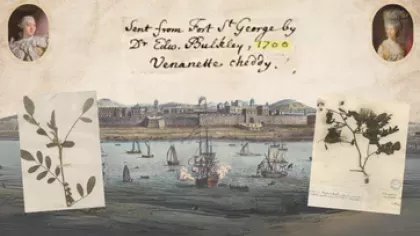21 December 2018
New Kew discoveries for 2018
This year Kew scientists have published, with partners, 172 varieties, species or genera of fungi and plants new to science. Martin Cheek describes some of these discoveries and the stories around them.

Plants and fungi underpin many aspects of everyday life, from clothes and food to medicines. Many of the new species described here have potential benefits for humanity but are sadly threatened with extinction.
Taxonomy is essential for identifying new species of economic importance and understanding biodiversity for targeted conservation efforts. One of Kew's strategic outputs, Tropical Important Plant Areas, directs research and conservation where it matters most.
Fungal finds
The hedgehog mushroom
Tuula Niskanen, Research Leader in Mycology and colleagues has identified twenty-two species in the hedgehog-mushroom genus Hydnum, of the Basidiomycota division which are distinctive for having spores on spikes, not gills. Found growing in North American and European woodlands, many Hydnum species are edible.
Tuula also co-published, with colleagues, a new family, Pseudoclitocybaceae, with two new genera. Other fungal discoveries include a new species of Big Blue Pinkgill found in the South Downs of the U.K., through the Lost and Found Fungi project, and Cryptophyllachora eurasiatica, a new species and genus of fungus that feeds on the allergenic eurasian weed, Artemisia (ragweed).
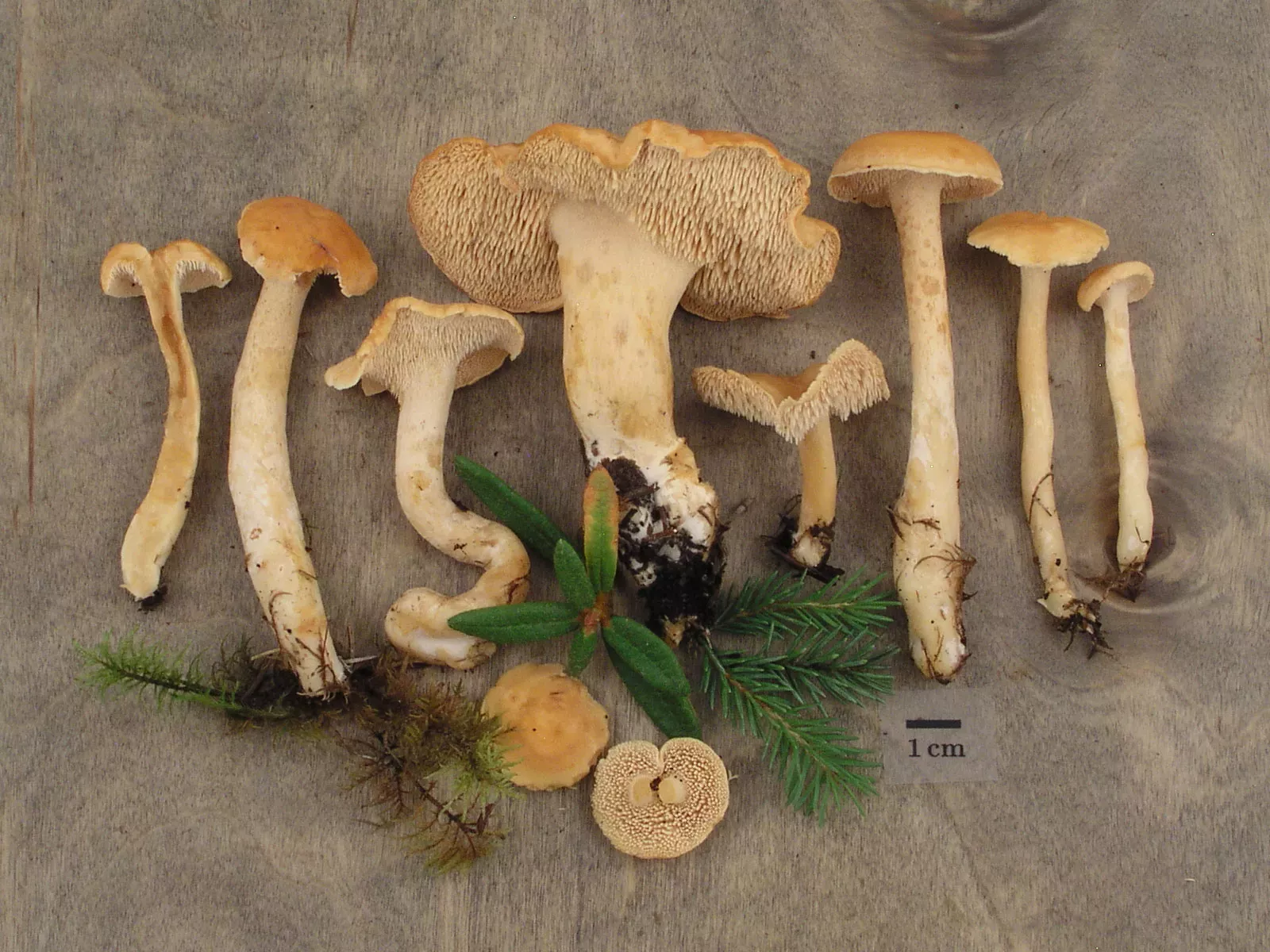
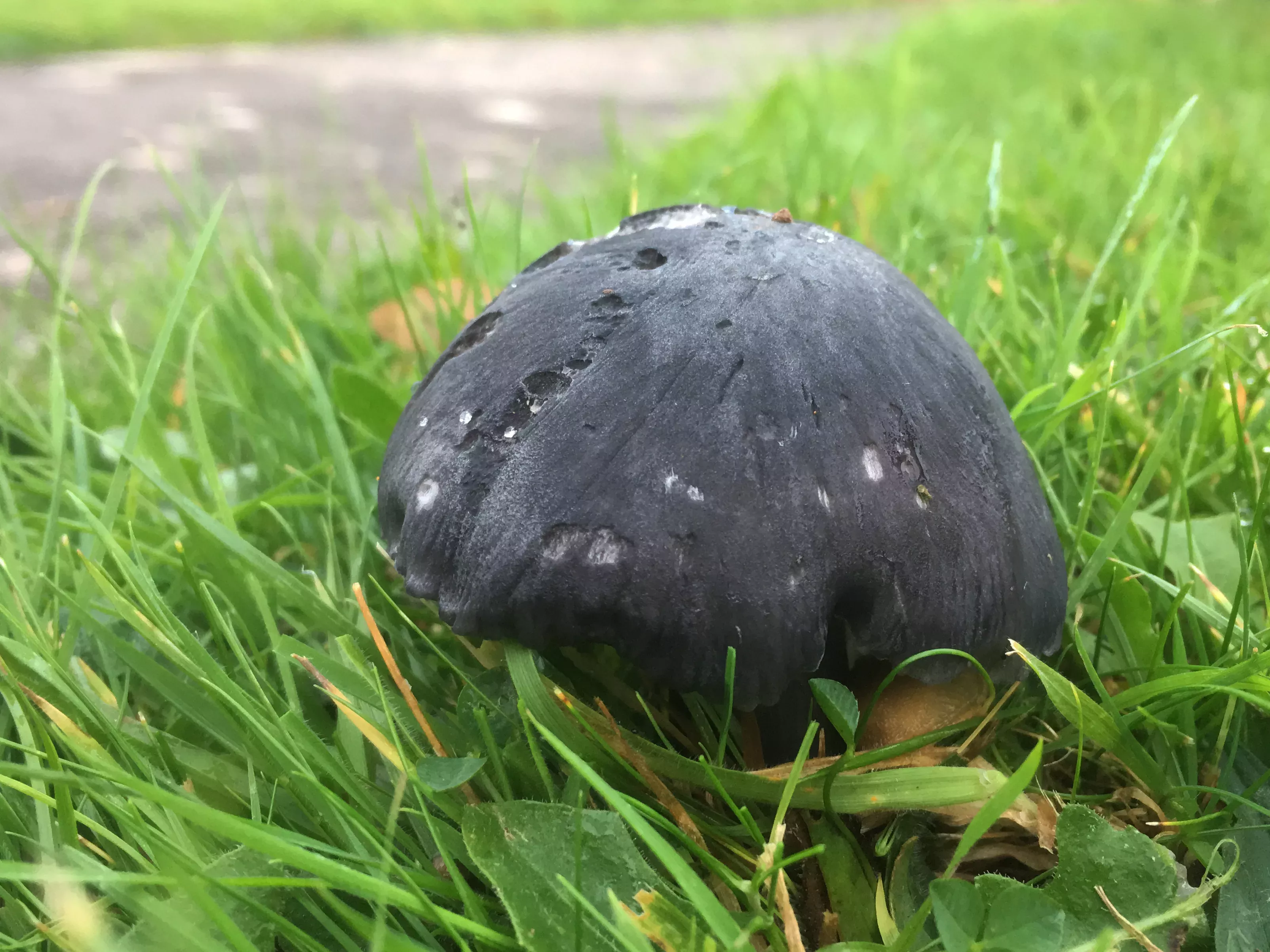
Plant discoveries
Most of Kew’s plant discoveries are focussed in the tropics, where species diversity is high, poorly known, and where local capacity can be insufficient to meet the needs of researching and protecting it.
Kew researcher David Frodin described 26 new species and varieties of small trees, shrubs and lianas belonging to the Schefflera genus (Araliaceae) all contained in his co-published book on the Bornean species of the genus. It’s estimated that there could be 150 or more species of Schefflera in Borneo, so there is a considerable number yet to be described. He has worked on this large genus of over 1200 species of tropical trees, climbers and epiphytes for over 50 years.
After seeds collected in Vietnam by horticulturalists back in 2014 were grown in the gardens at RBG Kew and RBG Edinburgh, a new orange flowered plant Oreocharis tribracteata (Gesneriaceae) with distinct features was identified by Kew Research Leader Gemma Bramley along with collaborators at RBG Edinburgh.
The bank card orchid
An Indonesian orchid discovered and described by Kew Research Leader André Schuiteman, and named Bulbophyllum adolinae for Adolina after the wife of the governor of West Papua, was featured on a bank card of local bank, Bank Negara Indonesia. André’s contributions take us ever closer to the possibility that there may be as many as 3000 (or more) species of orchids in New Guinea and the associated islands.
André also co-described a spectacular new, and endangered, slipper orchid from Laos, Paphiopedilum papilio-laoticus, which was discovered on the blackmarket in Vientiane, Laos.
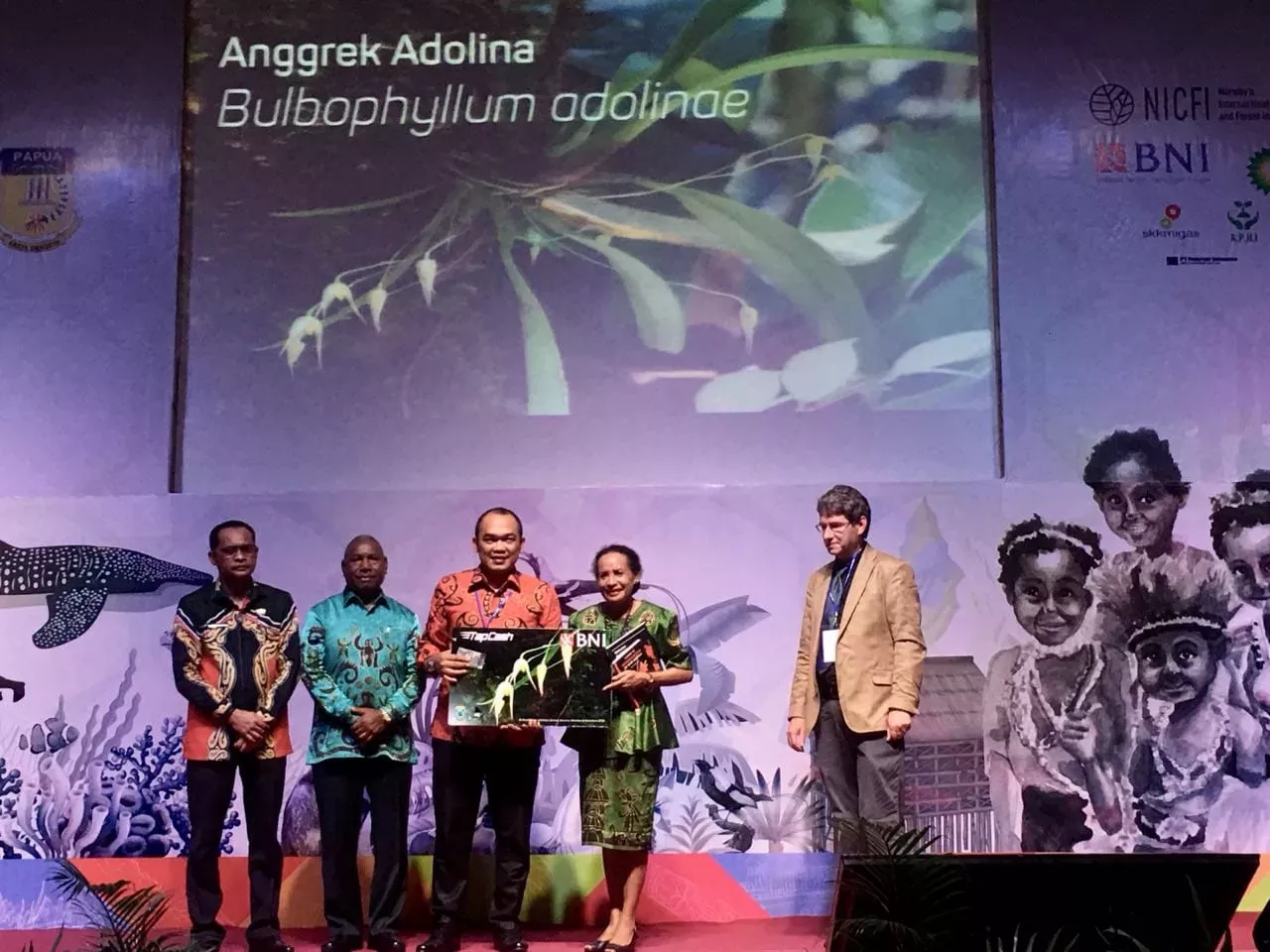
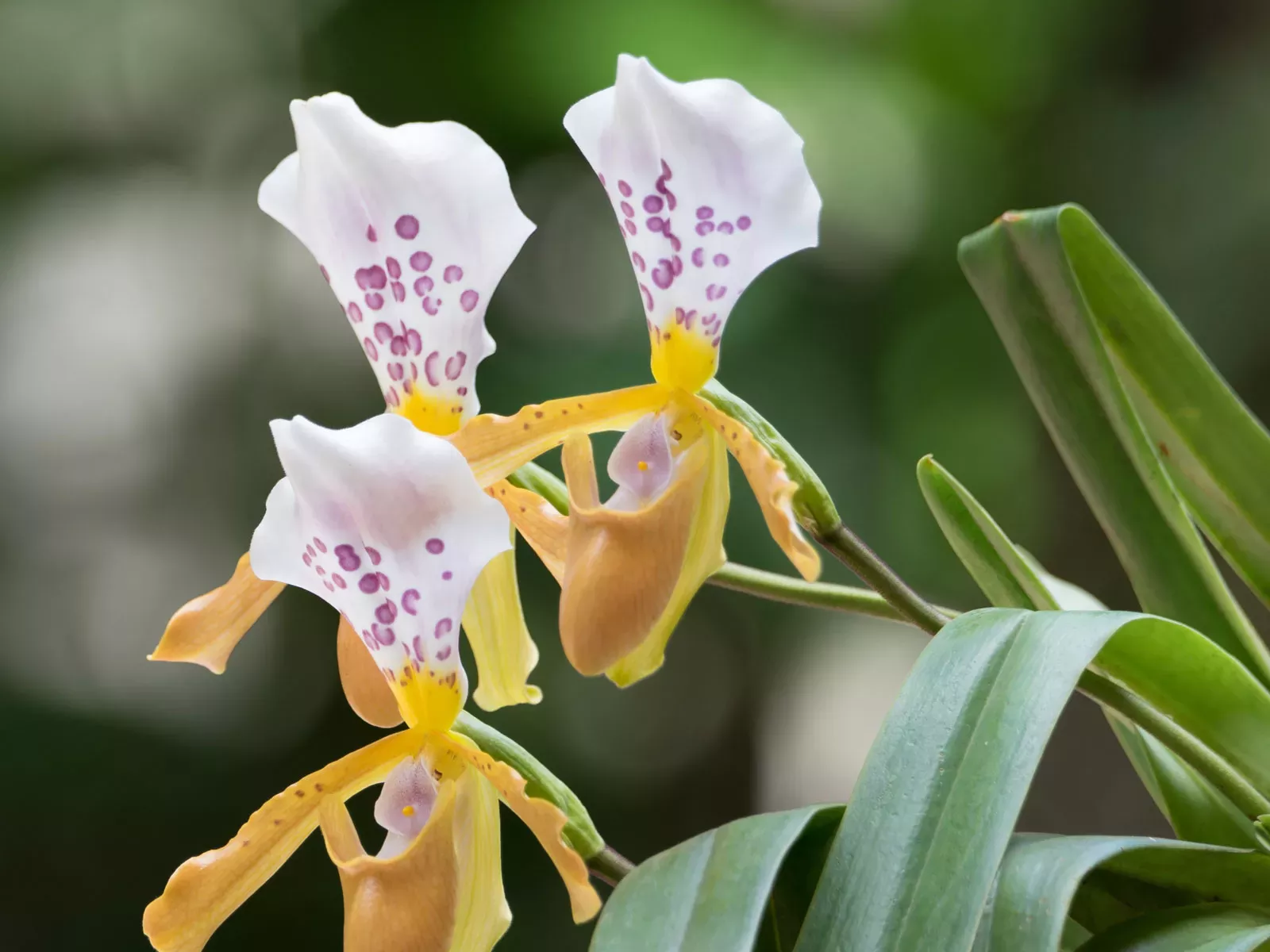
Neotropical novelties
In the neotropics, Kew researcher Elizabeth Woodgyer with her Brazilian colleague Rosana Romero published six new species of Microlicia (Melastomataceae) from Brazil.
In Bolivia, Kew's John Wood and colleagues identified two more Ipomoea (Convolvulaceae; morning glory) species bringing the total number of novelties of Ipomoea that he has described from that country to 21, including close relatives of the sweet potato, Ipomoea batatas.
A new small tree species of the allspice genus, Pimenta berciliae (Myrtaceae) was discovered on the island of Hispaniola in the Caribbean and published by Thais Vasconcelos, Eve Lucas and Brigido Pegueiro from the Dominican Republic, the country of origin. Allspice is the dried unripe fruit and a crucial ingredient in Caribbean cuisine.
Purple flowering yam
Back in 2002, a photo of a male Dioscorea hurteri was sent to Paul Wilkin (Kew’s Acting Director of Science) by a South African colleague. It appeared to be a new species, but at least one specimen is needed in order to give it a name and describe it, so it went on the back burner. Fifteen years later Kew’s Paul was working on specimens with a student who noticed that the characteristics of two of them didn’t match any of the recognised species, but did match the photograph. This enabled the species to finally be described.
Anti-cancer potential
A new genus and species, Kindia gangan (Rubiaceae) photo, with only a few hundred plants, was discovered on sandstone cliffs in Guinea, West Africa. Analysis of its bright orange exudate by Kew Research Leader Melanie-Jayne Howes discovered over 40 cycloartane triterpenoids, a class of compounds with high biological activity and of interest for anti-cancer research.
The biggest discovery
Kew’s most massive new species this year is also from Guinea - Talbotiella cheekii (Leguminosae) is a canopy rainforest tree that grows to 24m tall, and the trunk to 83cm in diameter. Only minute scraps of its once widespread forest habitat exists. In these fragments it is the dominant canopy tree, and some trees can be seen from the side of a major international highway. The first specimens were collected in 2015, but identification depended on a flowering collection by Kew’s Xander van der Burgt in 2017.

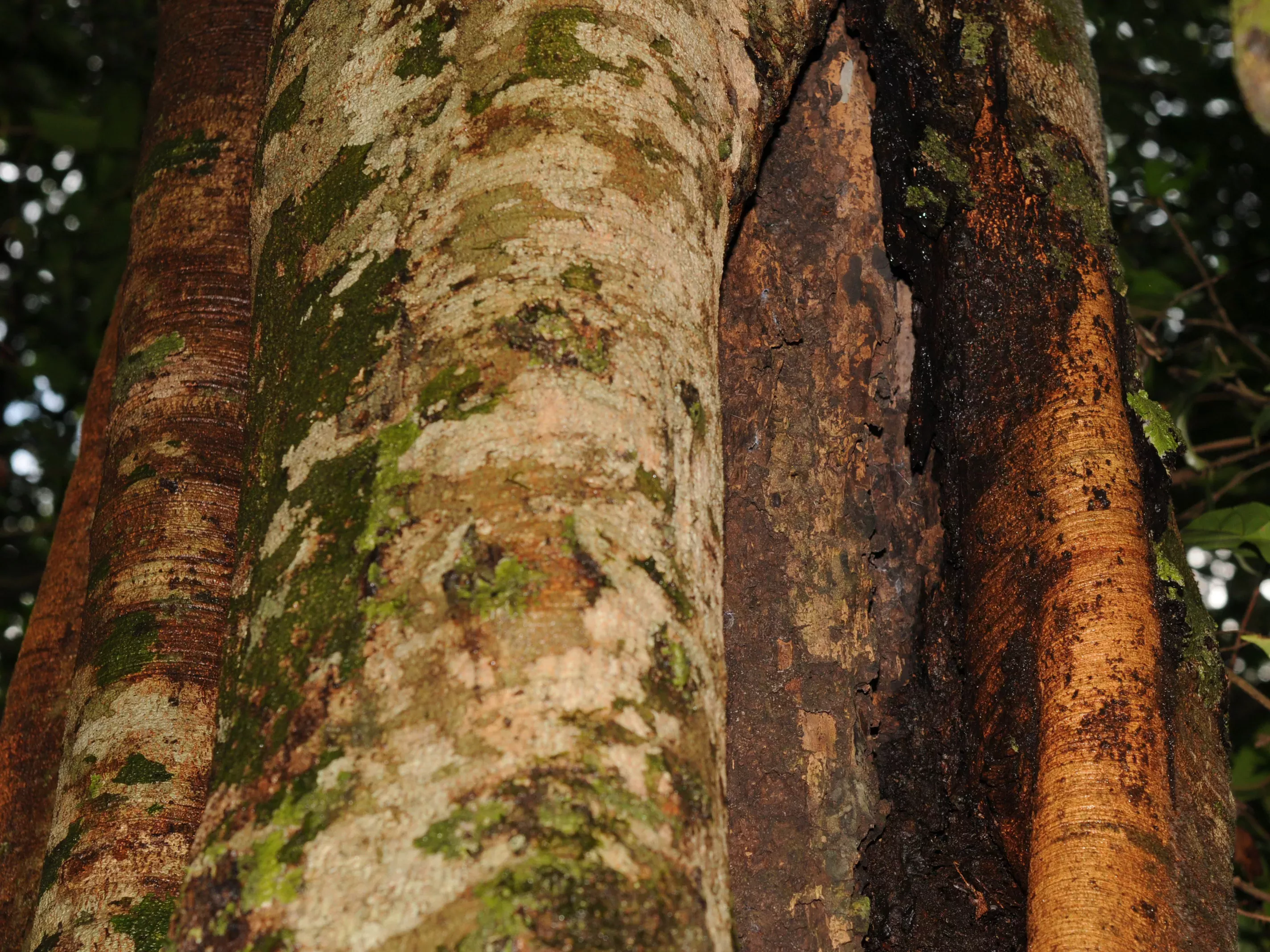
Aquatic herb on the edge of extinction
Lebbiea grandiflora (Podostemaceae), is a new genus of waterfall plant expected to become extinct in the next two years due to mining and hydroelectric projects. It is named for Dr Lebbie, Head of the National Herbarium of Sierra Leone who discovered it.
Cloudforest tree
Vepris bali (Rutaceae) from the Bali Ngemba Forest Reserve of Cameroon is a cloudforest tree known only from a specimen collected in 1951, despite efforts by teams of botanists over several years recently to rediscover it. Sadly, it is probably extinct. Vepris species contain essential oils and alkaloids of known medical application.
Giant palm
Lemurophoenix laevis, a massive palm described by Kew researchers John Dransfield and Jeff Marcus, is known only from three plants in gardens in Hawaii and North Australia, grown from seed collected in Madagascar eighteen years ago. It is a mystery since it is still unknown in the wild in its country of origin.
There are perhaps many other plants still known only from cultivation, never yet having been collected in the wild.
Thanks to all 32 of the Kew scientists that authored these species with their partner scientists, around the world, and especially to the five scientists that accounted for 85 of the new species, nearly 50% of the total.
References
Lebbiea grandiflora: Cheek, M, & Lebbie, A. (2018) Lebbiea (Podostemaceae-Podostemoideae), a new, nearly extinct genus with foliose tepals, in Sierra Leone. PLOS ONE 13(10): e0203603.
Paphiopedilum papilio-laoticus: Schuiteman, A., Luang Aphay, S. & Iio, S. (2018). Paphiopedilum papilio-laoticus (Orchidaceae), a new species from Laos. OrchideenJournal (Internet) 6(4): 3–5.
Bulbophyllus adolinae: Schuiteman, A., et al. (2018). Bulbophyllum irianae and B. adolinae (Orchidaceae: Dendrobiinae), two new species of sections Hoplandra and Peltopus from Indonesian New Guinea. OrchideenJournal 6(4): 3–8.
Pimenta berciliae: Thais N.C., Vasconcelos, Eve J. Lucas & Brigido Peguero. (2018). One New Species, Two New Combinations and Taxonomic Notes on the All-spice Genus Pimenta (Myrtaceae) from Hispaniola. Phytotaxa. 348(1); 32-40.
Ipomoea prolifera: Wood, J.R.I., Martinez Ugarteche, M.T., Muñoz-Rodríguez, P., Scotland, R.W. (2018) Additional notes on Ipomoea (Convolvulaceae) in Bolivia. Kew Bulletin 73(57): 1–15.
Ipomoea inaccessa: Wood, J.R.I., Martinez Ugarteche, M.T., Muñoz-Rodríguez, P., Scotland, R.W. (2018 (2018) Additional notes on Ipomoea (Convolvulaceae) in Bolivia. Kew Bulletin 73(57): 1–15.
Hydnum melitosarx: Niskanen, T. et al. (2018) Identifying and naming the currently known diversity of the genus Hydnum, with an emphasis on European and North American taxa. Mycologia 110: 890-918.
Dioscorea hurteri: Hills, R., Muthama Muasya, A., Maurin, O. et al. (2018) Kew Bulletin 73:14.
Kindia gangan: Cheek M, et al. (2018). Kindia (Pavetteae, Rubiaceae), a new cliff-dwelling genus with chemically profiled colleter exudate from Mt Gangan, Republic of Guinea. PeerJ 6:e4666.
Oreocharis tribracteata: Möller et al. (2018). Edinburgh Journal of Botany 75: 309-319
Talbotiella cheekii: van der Burgt, X.M. et al. (2018) Talbotiella cheekii (Leguminosae: Detarioideae), a new tree species from Guinea. Kew Bulletin 73: 26.
Vepris bali: Cheek M., Gosline G. & Onana J.-M. 2018: Vepris bali (Rutaceae), a new critically endangered (possibly extinct) cloud forest tree species from Bali Ngemba, Cameroon. Willdenowia 48: 285–292.
Lemurophoenix laevis: Dransfield J. & Marcus J. 2018. Lemurophoenix laevis. Palms 62(2): 70-76.
Schefflera lanata: Puad ASA., Frodin DG., Barkman TJ. 2018. The genus Schefflera in Sabah, Malaysian Borneo. Natural History Publications (Borneo)
Microlicia: Romero, R. & Woodgyer, E.M. (2018) Kew Bulletin 73: 22.



